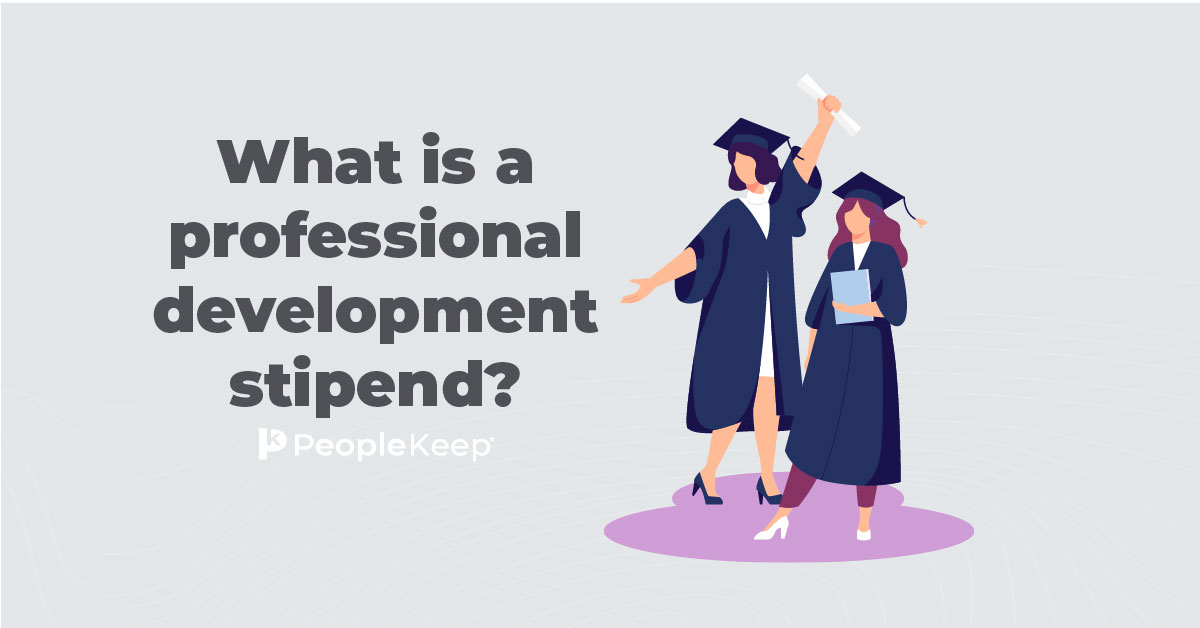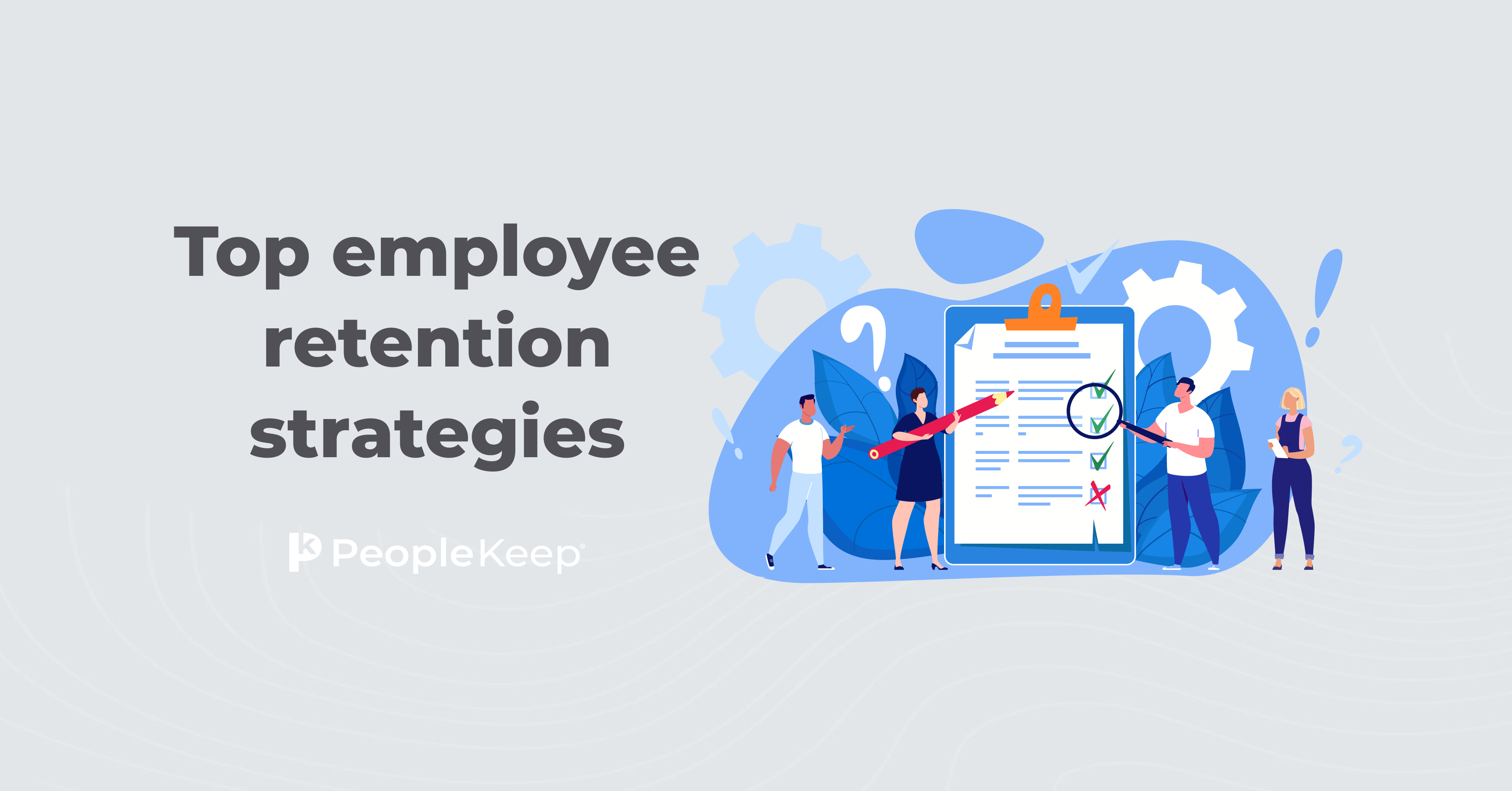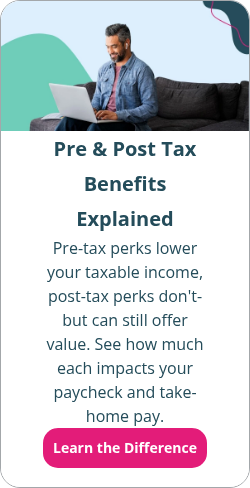Why your organization needs to invest in employee development
By Chase Charaba on September 13, 2023 at 10:16 AM
Business owners need teams that continue to innovate and grow to remain successful. Hiring top talent is essential to growing your organization, but promoting internally is just as critical and can be a win-win for you and your employees who want to move up within your organization.
Investing in employee development is one of the best ways to ensure your organization continues to evolve. The right professional development plans can equip your current employees with new skills and experiences that prepare them for leadership roles within your company. They can move up, and you can focus on hiring entry-level employees.
In this article, we'll explain why your organization needs to invest in employee development, why professional development matters to your employees, and how you can support your development efforts through employee benefits.
What is employee development?
Employee development is the process of supporting your employees' professional development through leadership training, learning opportunities, or hands-on experience. It also involves making your employees feel appreciated and supported so they can continue to grow in the workplace.
Employee development activities can help workers establish career goals, develop new soft skills, and provide new opportunities for advancement at your organization.
How does employee development affect employees?
Improving your employees' skills and experiences helps create a more motivated workforce. Your employees can become more productive at work, helping you reach your goals.
When your employees feel appreciated and supported thanks to your employee development activities, they'll have higher job satisfaction. This can lead to improved employee retention.
Most importantly for your employees, providing them with tools and access for personal development helps them achieve their personal career goals, including moving up in your organization.
Many employees feel that professional development is essential to reach their full potential. According to a survey from ClearCompany1, 74% of employees said a lack of employee development activities keeps them from their full potential in the workplace.
Failing to provide career progression for your employees can result in them leaving your organization for one that offers more career growth opportunities.
How does employee development impact your organization?
When you take employee development seriously, you’ll notice positive changes in your organization.
Encourages growth
By providing your employees with career advancement and development opportunities, you'll ensure your current workforce continues to grow. This will allow your organization to stay ahead of industry trends. By continuing to grow your workforce's skill sets, your organization can innovate and become an industry leader. This can lead to better business outcomes.
If your employees become highly skilled and specialized, your organization has a greater competitive advantage.
Prevents skill shortages
Investing in your employees can reduce any skills shortages you might face. These investments are especially important in highly skilled environments like the technology and manufacturing sectors. This allows your employees who already understand your company culture, goals, management, and products to move up to specialized positions rather than focusing your resources on hiring someone from the outside.
Reduces employee turnover and increases job satisfaction
Employee development programs also reduce your employee turnover rate. That's because employees value professional growth. According to Zippia2 research, 45% of employees would stay at a company longer if it invested in their learning and development.
Additionally, our 2022 Employee Benefits Survey Report found that 61% of surveyed employees value professional development benefits in the workplace. However, only 40% of employers offer them.
Establishing a development program will give you a competitive advantage in hiring and allow you to better attract and retain employees. Employee satisfaction is good for business. When your employees are happy, they’re more likely to give their best effort each day and stick around for the long haul.
How to create an employee development program
If you're thinking about launching employee development opportunities for your organization, you'll need to consider the unique needs of your organization and your employees. This ensures you’ll tailor your employee development activities to match your industry and your employees’ current skills.
Think about the skills critical to your industry. How can you create a robust employee development program that caters to all learning styles, preferences, and skill levels? If your program doesn't appeal to your employees, they'll lose interest in it, preventing them from developing these valuable skills.
We'll outline a few steps you can take to create robust employee development plans that promote longer-term employee retention.
Evaluate your goals
First, you'll need to consider your goals for the program. Is your primary goal to reduce employee turnover by offering additional perks, or to help your employees grow into their roles and advance in the organization?
You'll also need to consider how your program relates to your long-term goals and business strategies.
Once you have an idea of your goals and objectives for the program, you can start designing the individual employee development activities.
Provide a wide variety of development opportunities
Next, you'll want to ask your employees what skills they'd like to develop to help them with their career paths and current positions. You should also ask about their preferred format for these activities and opportunities.
Skills that your program might address include:
- Communication skills
- Project management skills
- Leadership skills
- Cross-training with other departments
- Training on advanced tools and programs
If only a few employees have an interest in learning a specific skill, you can purchase an online course or include on-the-job training if possible. If several of your employees are interested, consider seminars or lunch-and-learns to reduce costs.
Your program should accommodate all types of learning and unique employee needs to attract and retain employees successfully. You may need to offer a combination of classes, seminars, online courses, and hands-on training.
Your program might include:
- Mentorship opportunities
- Job shadowing with co-workers
- Seminars and lunch and learns
- Online courses
- Project rotation and job enrichment
Additionally, you'll need to provide your employees with the opportunity to take on tasks or switch roles that help them grow their skills and find value in their work. By focusing on employee growth, you'll continue to boost company loyalty and promote a culture of learning.
Offer employee-specific training
While your employee development activities will go a long way toward creating an engaged workforce, you won't be able to touch on every aspect of professional development. That's where personalized, employee-specific training comes in.
By listening to your employees' constructive feedback on their work, what interests them the most, and what their professional goals are at your organization, you can better tailor tasks and opportunities for each employee.
Encourage your employees and their direct managers to meet regularly to discuss their career plans and opportunities for trying new skills or tasks. This can lead to greater employee performance and engagement.
How employee benefits can help you invest in your employees
Establishing employee development programs can take a lot of time and valuable resources. While there's no replacement for hands-on training with co-workers or job enrichment tasks, there are easier ways to provide your employees with professional development opportunities, including providing access to online courses and tools.
If you want your employees to have more ownership over their development, you can offer them personalized benefits to support their self-directed efforts.
For example, you can offer a taxable continuing education employee stipend that allows you to give employees an allowance for education-related expenses, such as online courses, college classes, and textbooks.
Additionally, a professional development stipend encourages continuous learning and professional growth. Your employees can put this money toward online learning platforms, conferences, career coaching, and professional memberships or associations. These professional development opportunities can close skill gaps and help your employees reach their career goals.
You could also offer your employees a tax-free education fringe benefit for their college courses to help them improve their skills and qualifications for specialized roles within your organization.
This allows you to focus on growing your organization and aligning tasks with employees' career goals while they can choose how to leverage their benefits to support their growth.
Other benefits that can boost the employee experience
Education benefits aren’t the only way to show that you care about your employees' growth and happiness. Other types of personalized benefits can help you better support your employees, enabling them to focus on their work and talent development, and encouraging them to stay at your organization instead of leaving for a competitor.
Personalized health benefits such as a health reimbursement arrangement (HRA) allow you to reimburse your employees for their qualifying medical expenses tax-free up to a monthly allowance amount that you define. This not only helps you retain your employees, but it helps them live healthier, reducing the number of times employees are out sick.
With health and wellness benefits, your employees can focus more of their time on advancing their careers and growing their skills without worrying about their health and wellness expenses.
Offering a variety of employee benefits alongside your employee development program is a great way to ensure that your employees stay satisfied with their work.
Conclusion
Employee development is a great way to improve the overall skill set of your organization while promoting employee engagement and reducing turnover. By investing in your skilled employees, you'll be able to reduce recruitment costs and better achieve your business goals.
To ensure your employees remain engaged, you'll need to offer more than just continuing education benefits. If you're interested in expanding your benefits package, PeopleKeep can help. Our HRA administration software makes it easy to set up and manage your health, wellness, and remote work expenses in minutes each month.
This blog article was originally published on August 3, 2022. It was last updated on September 19, 2023.
Check out more resources
See these related articles

What is a professional development stipend?
By offering a professional development stipend, you encourage your employees to discover new talents and further their abilities through continued education.

Employee burnout: what it is and how to prevent it
Learn the causes and signs of employee burnout, including how to create a positive work environment where employees feel safe and appreciated.

Top employee retention strategies
Looking for effective employee retention strategies? This guide provides you with proven tactics to reduce turnover and increase employee satisfaction.



